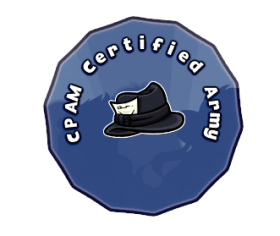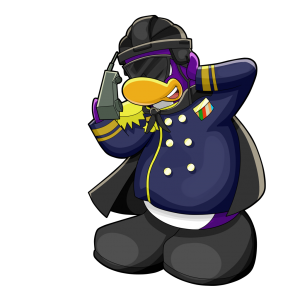NORTHERN LIGHTS, UKAHALA—RFCP is proud to celebrate the diversity of its soldiers. This is an educational and cultural piece about Major Arne’s home country! Prepare to be swept away to a tropical paradise!
Ahhhhh, Colombia. A country of nature, cultures, variety, kindness, resourcefulness, landscapes, biodiversity, happiness, cheap taxis, coffee, historical sites, rice, corn, artisanal products, and wild Arnes roaming around.
While things aren’t all happy down here, it’s an attractive place. There’s a little something for everyone here. From beaches to mountains, deserts to metropolises, historic sites to massive plantations, shopping malls to island getaways, forests and tropical weather 12 months a year, there is much to love about Colombia! To quote Morshu, “You want it, it’s yours, my friend.”
But if you want to truly enjoy your time, you will need some advice. So as a qualified Colombian native, I’m here to explain to you how to survive in my beautiful country. The first issue we will tackle regards money and food. The most important thing to keep in mind regarding money is the conversion value. When you trade an American dollar, you receive around 3.500 Colombian pesos.
That might make you think either our economy is in shambles or your dollars are worth quite a lot. Both are correct, but the huge number has to do with the fact that we’re one of the few countries that used this system in which almost everything has like three extra zeros attached to it. Here in Colombia, a million pesos is standard one month salary for some professions, while a million dollars in the U.S. would be lifechanging.
There are coins that we don’t have fun nicknames for as well like the 50 pesos coin, the 100 pesos coin, the 200 pesos coin, the 500 pesos coin, and the 1000 pesos coin, which is what I call the fat oreo (since it looks like two coins glued together). 1000 pesos is pretty much a pretty standard money amount, and it is also considered the first bill. For bills we have the 1.000, 2.000, 5.000, 10.000, 20.000, and 50,000 bills as well as the recently introduced elusive 100.000 bill.
Most food in restaurant chains such as McDonald’s (of course we have those here!) will retail between 20.000 and 10.000 pesos, but it can go up to 30.000 in some more high-end places. Speaking of which, what other U.S. fast food chains do we have in Colombia? Domino’s, Pizza Hut, Papa John’s, Little Caesar’s, Burger King, Taco Bell, Panda Express, and Subway are some of the American comforts that you can find in Colombia as well. We still are missing out on many chains like Popeye’s, Jimmy John’s, Sonic Drive In, Arby’s, Chick-Fil-A, and Carl’s Jr, but we make up for it with our own fast food chains!
There’s La Lucerna, (lah-loo-ser-nah), a dessert place with some gourmet food; Frisby, the biggest fried chicken chain in the country; and burger chains such as Presto, Sayonara, and Del Rodeo. El Corral is a higher-end burger chain; Crepes and Waffles is fine dining for the broke; Kei-Zaki is sushi and japanese food; Mis Carnes has traditional Colombian foods as well as some wacky menu items; and QBano sells sub sandwiches.
There’s many I didn’t cover, but we have several rich options in traditional food as well. We have the classic empanada, a cheap dough-based dish that’s stuffed with meat, chicken, or cheese, and then deep fried. Some regions may pair them with a juice made out of sugarcane called guarapo. There’s also the bandeja paisa, which is beans served with avocado, the chorizo, which is like a fat sausage, egg, rice, and chicharrones which is a type of fried pork.
Some other options are ajiaco and sancocho, two rich creamy vegetable-based soups. The ajiaco has a more intense flavour based on an ingredient named guasca, while the sancocho is more based on the yucca. We also have some fun fruits like the passion fruit and chalupa, two yellow fruits that are really sour and grow in tropical environments. There’s also the guanabana and the guayaba, which are both sweet but the guayaba is much more sour and acidy overall.
Guayabas can be condensed into these red rectangular candies which I actually like quite a bit. Then there’s pitaya, which looks kinda like a yellow dragon fruit. Most of these are kinda cheap, except pitaya, which can get quite expensive. Also don’t worry about when each fruit reaches its peak season, because ALL seasons are optimal fruit seasons in Colombia!
Due to a phenomenon called the equatorial line, which is a strip across the middle of the world encompassing most of South America, down here there’s no such thing as the regular season calendar. No snow, no sun until 10:00 p.m., no leaves falling everywhere, just an eternal season comparable to spring in the Northern Hemisphere.

So, next summer, think about booking a trip down to Colombia, but only if you’re vaccinated or did a COVID test. Please. Safety first, folks!
What do YOU think about Colombia? Let us know what YOU think the most interesting food is in the comment section below!
Filed under: Uncategorized
























Leave a Reply